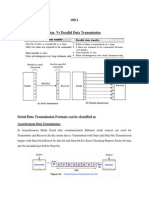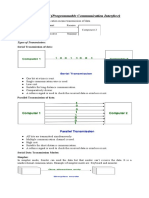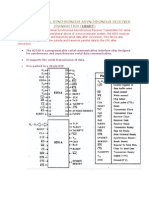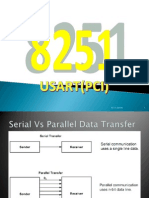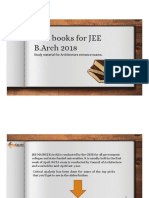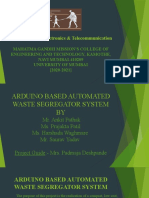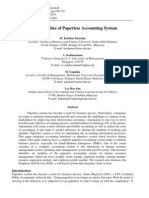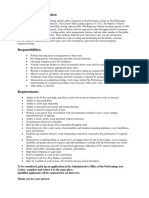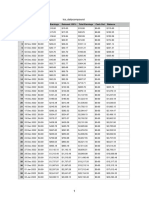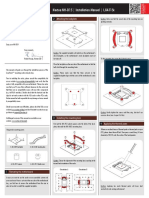0% found this document useful (0 votes)
41 views6 pagesMPMC 3rd Unit
The document discusses the differences between parallel and serial data communication, highlighting that serial communication is preferred for long distances due to its efficiency and reduced signal degradation. It explains various modes of serial communication, including simplex, half-duplex, and full-duplex, as well as synchronous and asynchronous transmission methods. Additionally, it covers the architecture and operation of the 8251 USART and the IEEE-488 and 20mA current loop standards in serial communication.
Uploaded by
saiprasad030225Copyright
© © All Rights Reserved
We take content rights seriously. If you suspect this is your content, claim it here.
Available Formats
Download as PDF, TXT or read online on Scribd
0% found this document useful (0 votes)
41 views6 pagesMPMC 3rd Unit
The document discusses the differences between parallel and serial data communication, highlighting that serial communication is preferred for long distances due to its efficiency and reduced signal degradation. It explains various modes of serial communication, including simplex, half-duplex, and full-duplex, as well as synchronous and asynchronous transmission methods. Additionally, it covers the architecture and operation of the 8251 USART and the IEEE-488 and 20mA current loop standards in serial communication.
Uploaded by
saiprasad030225Copyright
© © All Rights Reserved
We take content rights seriously. If you suspect this is your content, claim it here.
Available Formats
Download as PDF, TXT or read online on Scribd
/ 6


